14. Khadak (Jessica Woodworth & Peter Brosens, 2006) – Belgium/Germany/Netherlands
Weirdness of the Mongolian kind
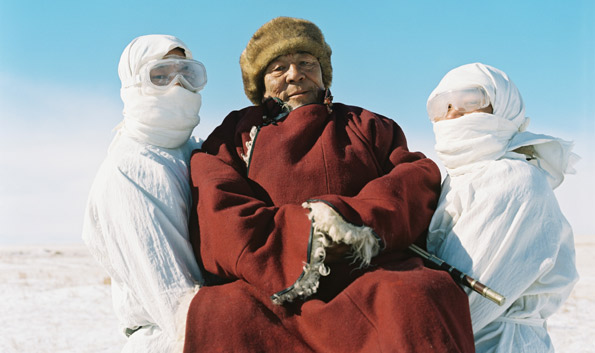
The common career of American-Flemish duo of Jessica Woodworth and Peter Brosens starts in Mongolia, where the idea of aviation & communism documentary is conceived. However, a snowy steppe takes them into another direction, the one that results in their majestic debut Khadak, literally translated as ‘sky-blue scarf’.
A cryptic narrative about epileptic nomad Bagi, shamanism and the band of avant-garde musicians, is utterly indefinable in terms of genre. At the begining, it is a pastoral drama, it ends as a metaphysical adventure and it works as a mélange of environmental parable and socio-political criticism, as viewed through the prism of anthropological interests.
Perceived from the angle of pagan myths, customs, rituals and beliefs, this film’s reality is shrouded in mysticism, the narrative thereof being off-beat – lyrical, non-linear and oft-abstract.
Gorgeous nival landscapes in Khadak’s first half make way for a cold concrete apartment blocks and menacing industrial complexes of the second half. And yet, they’re all shot with great care by the Lithuanian DP Rimvydas Leipus. A sudden removal from a safety zone is recognized as one of the main themes.
15. $9.99 (Tatia Rosenthal, 2008) – Australia/Israel
Weirdness of the stop-motion kind
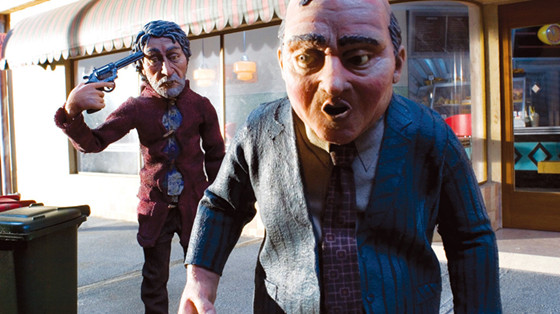
The first Israeli/Australian co-production is the adult stop-motion adaptation of co-writer Etgar Keret’s short stories. An ironic, melancholic, darkly humorous drama, which occasionally borders the absurd, is also a feature debut for Tel Aviv-born Tatia Rosenthal.
Starring Geoffrey Rush as the voice of a homeless man who commits suicide and reappears as a sullen chain-smoking angel, $9.99 chronicles everyday routines of a Sydneysiders bunch, while delving into the realm of magic realism.
Thematically intertwined, intermittently depressing and optimistic miniatures introduce several characters, all of whom are so desperate to understand the meaning of their life that they turn to a self-help handbook, which costs, well, $9.99. The fact that they’re all puppets, many with eccentric whims, doesn’t stop them from being believable – they love, suffer, face disappointments, have hopes, fears and desires. And none of them is spared.
The animation’s crudeness is in favor of the bitter struggle for achieving simple goals, such as taking the process of shaving up to new heights just to maintain the relationship with a supermodel.
16. Winter Silence (Sonja Wyss, 2008) – Netherlands
Weirdness of the superstitious kind
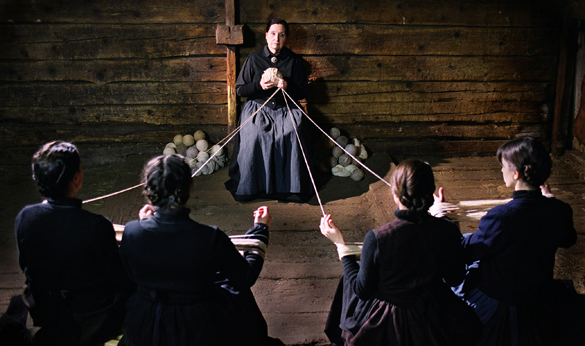
Somewhere amongst the hills of Switzerland. The whiteness of the snow, intersected by the blacks and browns of earth, wood and clothes. And the silence, occasionally disturbed by the chordophones sobbing. After their father’s death, four adult sisters stay with their devout mother in a log cabin they call home. Religion and legends are inseparable from their everyday lives – still, the encounter with a deer-men is unforeseen.
Winter Silence (Winterstilte) is like a melancholic fairy tale, one deeply rooted in the realities of superstitious protagonists. It is also a very fine example of artful minimalism. Every single picture thereof, with its mesmerizingly simple, yet elegant and pristine beauty, is truly worth ten thousand words.
The heroines’ smiles, sighs, tears, whispers, glances and gazes speak volumes, often in ambiguous symbols and metaphors. Their harmonious movements, during the usual acts of eating, knitting, hair-brushing or praying before bed, seem mystifying and ritualistic.
It is quite uncommon for a contemporary film to sustain so much composure and magnificent modesty. For that very reason, Sonja Wyss’s dignified cinematic poem is such an odd little gem.
17. The Forest (Piotr Dumała, 2009) – Poland
Weirdness of the Tarkovskian kind

Famous for his method of “destructive animation”, Piotr Dumała takes a turn into live-action direction with this feature-length debut. The Forest (Las) is a highly stylized experimental drama – leaden, autumnal, depressive, allegoric, contemplative, minimalistic, shrouded in mystery and almost dialogueless (as it is the case of many entries from this list).
Two narrative threads intertwine – one develops under the open sky, with the aged parent guiding his adult child through the foggy forest, while the other feels claustrophobic, with a son taking care of his immobile father in the modesty of their own home.
Dumała’s direction evokes the spirit of Tarkovsky – the monochromatic world of his two characters is far more than a dark tale of tough love and liberating death. While meditating on the possibility of the after life, amongst other topics, he communicates in a heavily metaphorized language of ascetic imagery. One of the main lures is definitely the flawless cinematography of Adam Sikora, who’s capable of turning a pot of porridge into a classy work of art.
18. Exaella (Andrew Oudot, 2011) – Russia
Weirdness of the cyberpunk kind
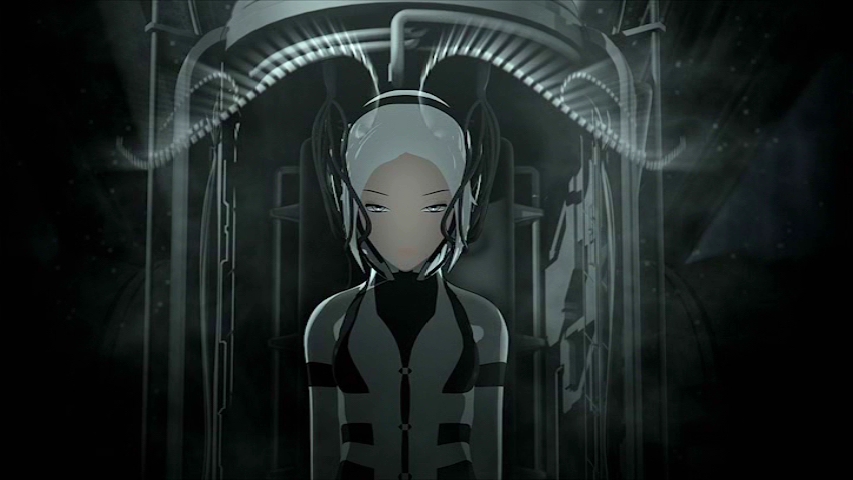
OVA Exaella, released as a feature film as well, is a peculiar homage to the cyberpunk anime of the late XX and early XXI centuries. Its post-apocalyptic setting, as imagined by Russian director, writer, composer and concept artist Andrew Oudot and his co-producer Isakawa Denisu, feels oddly familiar, yet refreshingly distinct.
The obscure story takes place in the mega-complex of Xonasu, portraying the hardships of Supreme Operator Exaella. Awakened from her cryosleep, after an unexpected meteor shower, she realizes that a malfunctioning system is already taking its toll.
From the very beginning, the audience – as confused and disoriented as Exaella – is left to wonder in the pitch black of steel constructions, that are infested with hostile mecha-creatures. Her (and our) only guide is an enigmatic girl Piku (undoubtedly inspired by Ergo Proxy’s Pino), who seems to know more than she’s telling. While solving the mystery, these two become accompanied by captain Ken of elite unit Clouds, whose intervention injects a healthy dose of adrenaline into Xonasu’s half-dead tissue.
A heavy atmosphere of hopelessness is achieved via moody soundscapes and severe surroundings of washed out colors, where Exaella, Piku and Ken are what little remains of humanity.
19. The Distance (Sergio Caballero, 2014) – Spain
Weirdness of the dwarfish kind
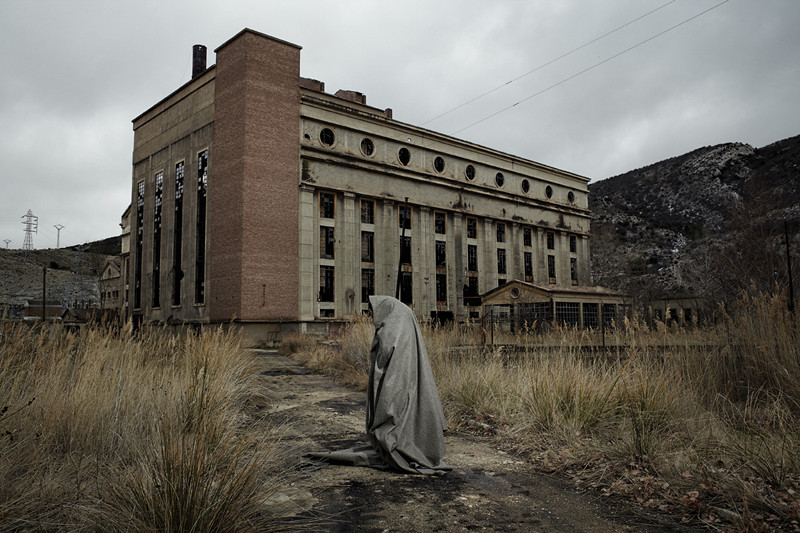
A titular McGuffin is much more than an abstract noun for both the author and the eccentric characters of this well-intentioned, over-the-top farce. In another marvelous example of Caballero’s “prankster art cinema”, three Russian dwarves, gifted with ESP powers, are tasked with stealing “The Distance” for an Austrian performance artist, who sports a dried-mud-covered face and a pair of Lederhosen.
A smoking, haiku-reciting bucket is just a hint at wry deadpan humor of this deliciously weird sci-fi mystery. Inspired by Buñuel’s, Tarkovsky’s and Lynch’s oeuvre, and possibly by Borges’s story The Aleph, Caballero creates a surreal puzzle of zany proportions. Every object, no matter how absurd (edible Yoko Ono, anyone?), has its purpose in the irrational world of The Distance (La distancia).
The atmosphere of drab, Soviet-like dreariness is complemented by a multilayered soundscape of Lenin’s speeches and the tracks that might have been taken from some scream queens’ agony compilation. Stylishly shot by Marc Gómez del Moral, Caballero’s ridiculous, yet charming flick is akin to a stuffed rabbit, who’s passing through the dimensional rift on a junk-part-machinery.
20. Zoom (Pedro Morelli, 2015) – Brazil/Canada
Weirdness of the loopy kind

Delightfully off-beat, Pedro Morelli’s sophomore feature follows a comic book artist Emma, a blockbuster director Edward and an aspired to become a writer model Michelle, all of whom are presented in a knotty loop-the-loop story that out-stranges Stranger than Fiction. The three individuals author each other destinies in one of the most refreshing non-conformist fantasies.
Zoom is basically a film within a comic within a film, or in other words – a cinematic ouroboros of the goofy kind. A triplet of stories riffs on the themes of both female and male insecurities, personal identity, higher forces, self-reliance, stereotypes and sexuality, while eating itself away in an amusing metafiction fashion.
Notwithstanding a beautiful mess that Zoom is, Morelli helms with an assured hand and a great sense of humor and self-irony, while throwing darts at Hollywood hollows and exploring the creator-creation relation. His cast is as diverse as his sly stylistic choices, which reflect each tale’s character. Emma gets stuck in an intentionally imperfect simulacrum of dimly lit American indie dramedy that transforms into a naively concieved crime-adventure.
Edward is a part of the sex-fueled world of ink and colors, that could be influenced by both Roy Lichtenstein’s and Ralph Bakshi’s works. At first, Michelle stars in a well-minded parody of delibaretely paced arthouse flicks, and later in a replica of some boasting action hit finale.
This quirky fusion of disparate ideas is never jarring, thanks to Adrian Teijido’s keen eye, Luis Dourado and Marcelo Souza’s attractive animation, as well as Kid Koala’s musical mischiefs.
Author Bio: Nikola Gocić is a graduate engineer of architecture, film blogger and underground comic artist from the city which the Romans called Naissus. He has a sweet tooth for Kon’s Paprika, while his favorite films include many Snow White adaptations, the most of Lynch’s oeuvre, and Oshii’s magnum opus Angel’s Egg.